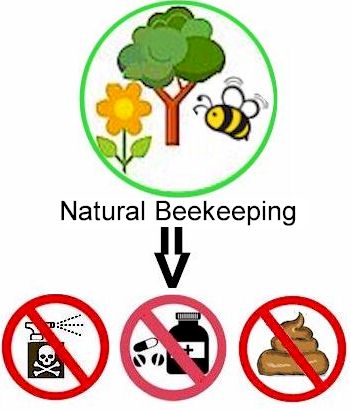
Natural Beekeeping IS NOT a carbon copy of how bees live in the wild. While nature can be randomly unforgiving (e.g. 75% of all feral swarms will not survive) , natural beekeepers can mitigate many risks and assure much better survival odds.
Natural Beekeeping IS, in short, just Beekeeping WITHOUT ANY UNNATURAL chemical or artificial crap in and around the beehives. No human-engineered chemicals and no foreign substances that do not belong in the beehive. In Natural Beekeeping, the local bee colonies and beehives are not subjected to any chemical or acid or oil treatments. See Studies…
When Natural Beekeepers provide the Right Natural Habitat with sufficient natural Spring-to-Fall foraging resources, they can also avoid any supplemental sugar feedings. See Why Feeding sugar is bad for both the Bees & You…
In Organic Beekeeping, common synthetic honeybee treatments like pesticides, antibiotics are not allowed but organic-approved acids like oxalic acid, formic acid and essential oils are allowed.
Essentials oils and natural acids, however, disrupt the bees’ pheromone-based communiction and kill many beneficial micro-organisms in the hive and, in the case of acids, cause a dramatic shift in pH affecting the bees’ beneficial gut bacteria and health. See Study: Honeybees are adversely affected by essential oils.
Treatment-free Beekeeping is a widely used but often misunderstood term. Treatment-free does not actually mean hands-off beekeeping, it’s most often just beekeeping without medicating the bees i.e. even organic-approved mite treatments are not used.
In Natural Beekeeping, just like in treatment-free beekeeping we do not medicate the bees in any way. No synthetic or organic poisons pollute our beehives and our honey products. Natural Beekeeping, however, adds to treatment-free beekeeping the following important bee-centric elements that put the bees’ needs first:
